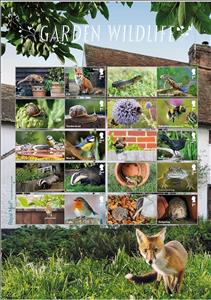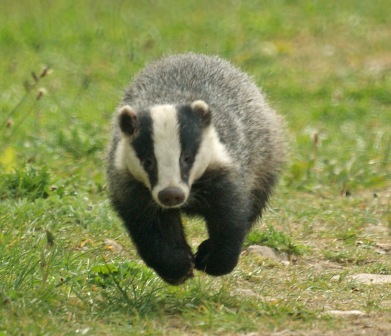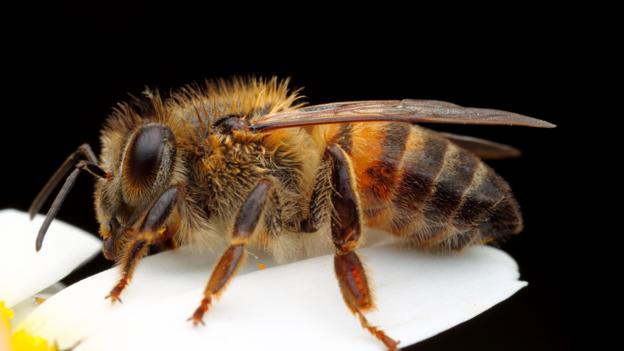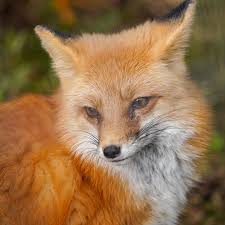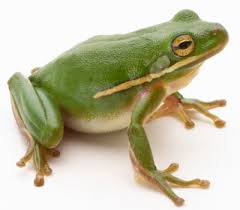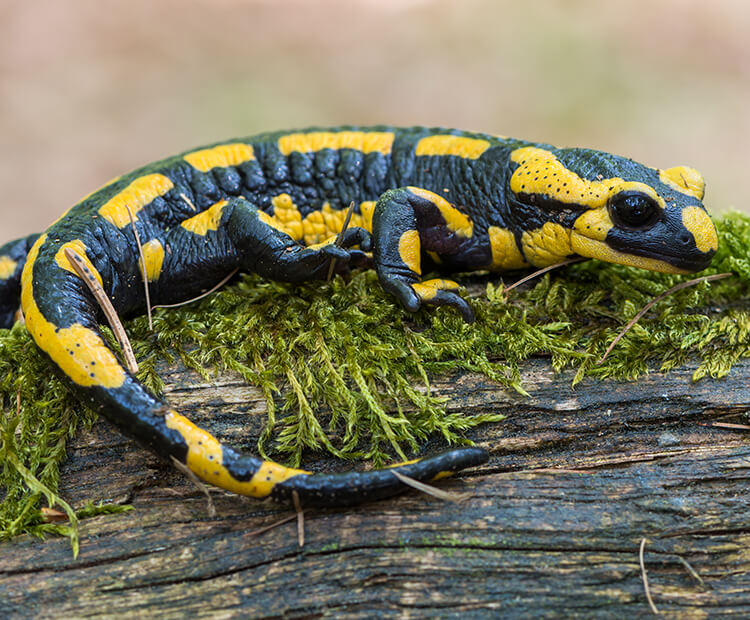Mini Sheet: Garden Wildlife Collector's Sheet (United Kingdom of Great Britain & Northern Ireland 2025)
Garden Wildlife Collector's Sheet (United Kingdom of Great Britain & Northern Ireland 2025)
11 March (United Kingdom of Great Britain & Northern Ireland ) within release Garden Wildlife (2025) goes into circulation Mini Sheet Garden Wildlife Collector's Sheet face value 12.50 No Face Value
| Mini Sheet Garden Wildlife Collector's Sheet in catalogues | |
|---|---|
| Colnect codes: | Col: GB 2025.03.11-03 |
Mini Sheet is square format.
Face value of 2nd. £ 0.85, of 1st, £ 1.65 per stamp on day of issueSold by Royal Mail for £ 13.70Also in the issue Garden Wildlife (2025):
- Stamp - Badger face value 2nd;
- Stamp - Blackbird face value 2nd;
- Stamp - Blue Tit face value 2nd;
- Stamp - Buff-Tailed Bumblebee face value 1st;
- Stamp - Common Frog face value 2nd;
- Stamp - Fox face value 2nd;
- Stamp - Garden Snail face value 1st;
- Se-tenant - Garden Wildlife face value 5*2nd;
- Se-tenant - Garden Wildlife face value 5*1st;
- Mini Sheet - Garden Wildlife Collector's Sheet face value 12.50;
- Stamp - Hedgehog face value 1st;
- Stamp - Robin face value 1st;
- Stamp - Smooth Newt face value 1st;
Mini Sheet Garden Wildlife Collector's Sheet it reflects the thematic directions:
Badgers are short-legged omnivores in the family Mustelidae (which also includes the otters, wolverines, martens, minks, polecats, weasels, and ferrets). Badgers are a polyphyletic rather than a natural taxonomic grouping, being united by their squat bodies and adaptions for fossorial activity. All belong to the caniform suborder of carnivoran mammals.
Bees are winged insects closely related to wasps and ants, known for their roles in pollination and, in the case of the best-known bee species, the western honey bee, for producing honey. Bees are a monophyletic lineage within the superfamily Apoidea. They are currently considered a clade, called Anthophila. There are over 20,000 known species of bees in seven recognized biological families. Some species – including honey bees, bumblebees, and stingless bees – live socially in colonies while most species (>90%) – including mason bees, carpenter bees, leafcutter bees, and sweat bees – are solitary.
Birds (Aves), a subgroup of Reptiles, are the last living examples of Dinosaurs. They are a group of endothermic vertebrates, characterised by feathers, toothless beaked jaws, the laying of hard-shelled eggs, a high metabolic rate, a four-chambered heart, and a strong yet lightweight skeleton. Birds live worldwide and range in size from the 5 cm (2 in) bee hummingbird to the 2.75 m (9 ft) ostrich. They rank as the class of tetrapods with the most living species, at approximately ten thousand, with more than half of these being passerines, sometimes known as perching birds. Birds are the closest living relatives of crocodilians.
Foxes are small-to-medium-sized omnivorous mammals belonging to several genera of the family Canidae. They have a flattened skull; upright, triangular ears; a pointed, slightly upturned snout; and a long, bushy tail ("brush").
A frog is any member of a diverse and largely carnivorous group of short-bodied, tailless amphibians composing the order Anura[(coming from the Ancient Greek ἀνούρα, literally 'without tail'). The oldest fossil "proto-frog" Triadobatrachus is known from the Early Triassic of Madagascar (250 million years ago), but molecular clock dating suggests their split from other amphibians may extend further back to the Permian, 265 million years ago. Frogs are widely distributed, ranging from the tropics to subarctic regions, but the greatest concentration of species diversity is in tropical rainforest. Frogs account for around 88% of extant amphibian species. They are also one of the five most diverse vertebrate orders. Warty frog species tend to be called toads, but the distinction between frogs and toads is informal, not from taxonomy or evolutionary history.
A hedgehog is a spiny mammal of the subfamily Erinaceinae, in the eulipotyphlan family Erinaceidae. There are seventeen species of hedgehog in five genera found throughout parts of Europe, Asia, and Africa, and in New Zealand by introduction. There are no hedgehogs native to Australia and no living species native to the Americas. However, the extinct genus Amphechinus was once present in North America.
alamanders are a group of amphibians typically characterized by their lizard-like appearance, with slender bodies, blunt snouts, short limbs projecting at right angles to the body, and the presence of a tail in both larvae and adults. All ten extant salamander families are grouped together under the order Urodela from the group Caudata. Urodela is a scientific Latin term based on the Ancient Greek οὐρά δήλη: ourà dēlē "conspicuous tail". Caudata is the Latin for "tailed ones", from cauda: "tail".
